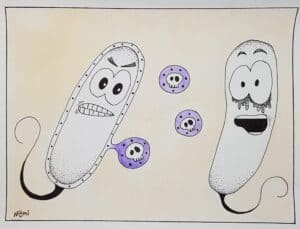
Bacteria firing toxic bubbles
Bacteria can form outer membrane vesicles and fill them with antibiotics. They then send these toxic bubbles off to kill competing bacteria.

Bacteria can form outer membrane vesicles and fill them with antibiotics. They then send these toxic bubbles off to kill competing bacteria.
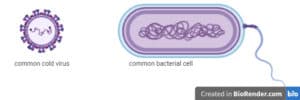
The differences between bacteria and viruses are based on their structure, size and reproduction. While bacteria are generally considered living organisms, viruses are not.
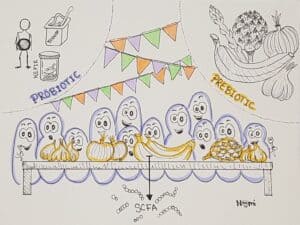
Your gut microbiome is full of helpful and fascinating bacteria. They all work together to keep you healthy, digest your food and fight off intruders. Here, you will learn about what a healthy gut microbiome is, what it does and how to keep it.
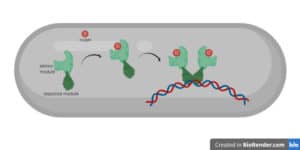
Bacteria use one-component systems and two-component systems to sense their environment and adapt to changing conditions.
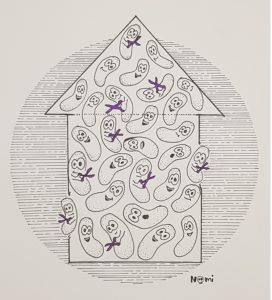
To protect themselves from the environment, bacteria build shielding biofilms houses. But once such a house gets old, bacteria need to break out it. For that, bacteria produce special scissors that can break biofilms and set free the bacteria.
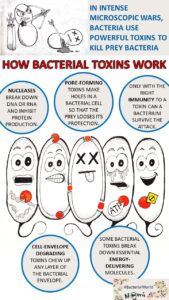
Bacteria developed lethal killing machines to deliver toxins into other organisms. These toxic bullets have different functions to break up essential components of the prey. Independent on what the target of the toxin is, the prey surely will not come out happy after that!
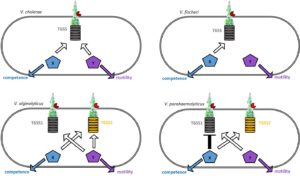
Bacteria have powerful killing machines with which they carve out their own niches. To kill competitors, bacteria from the Vibrio family, have a powerful crossbow and its arrows availble. However, these bacteria can decide whether they risk a kill and take up what’s left of the dead prey or they escape the dangerous situation. Here, we look at how bacteria decide to kill or flee.
Cable bacteria are long chains of bacteria that transport electrons within this chain. In this fascinating bacterial cable, these bacteria then conduct electricity.
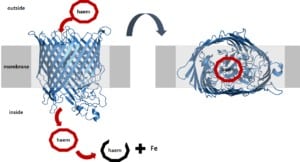
Bacteria can sense the iron concentration of their environment thanks to special iron transporters, of which they produce multiple.

Bacteria in your mouth protect your teeth from pathogenic bacteria. When you eat lots of sugars, the pathogens can fight off your friendly bacteria. The more pathogenic bacteria grow on your teeth, the more acids they produce that can cause caries and cavities. Learn about the bacterial battles in your mouths.
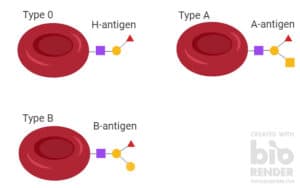
Some bacteria in our guts have proteins that cleave off sugars from our blood cells. This can lead to temporally changing blood types to feed the bacteria.
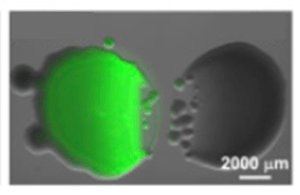
When bacteria are under attack, they are telling their siblings about the incoming danger. This allows them to produce weapons – like the molecule bacteriocin – to prepare themselves for a counterattack. With this altruistic behaviour, bacteria assemble and fight back as a team.
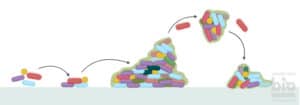
Bacteria can be major problems for human health. One of the reasons for that is because they have the ability to hide in their own houses. Such a house is called a bacterial biofilm which protect bacteria from harsh environments, toxic chemicals and to form a community within the biofilm.
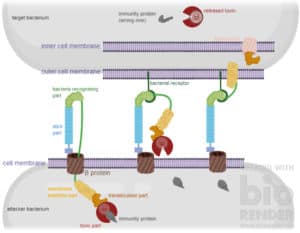
Bacteria use a stick weapon to kill other bacteria that do not belong to their family. This stick is the so-called contact-dependent growth inhibition weapon – a very complex killing device. Read on to learn about this weapon.

Pathogenic bacteria developed different mechanisms to attach to human host cells. However, our immune system learned to fight back, so that a constant battle between bacteria and host is happening in our bodies.
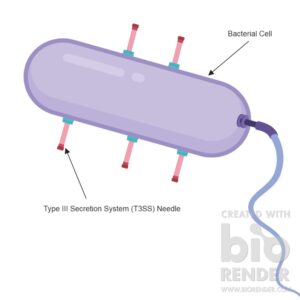
Some pathogenic bacteria use a weapon which is called type 3 secretion system to infect their host targets.
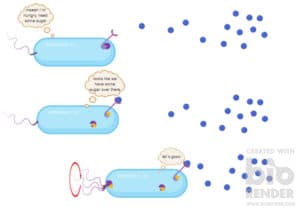
Chemotaxis helps bacteria to know that they are surrounded by certain chemicals. They can then move towards them if the chemicals are helpful. But how does chemotaxis work? Find out here.

Bacteria developed different antimicrobial resistance mechanisms to get rid of antibiotics. Here, you will learn what bacteria do with antibiotics so that they don’t harm them and what superbugs are.
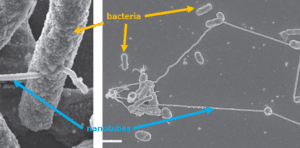
When bacteria are hungry, they sometimes also need the help of their friends. In that case, bacteria can build little tubes between them to exchange nutrients. With this bacterial nanotube, they can exchange nutrients and thus feed each other to make sure everyone survives.
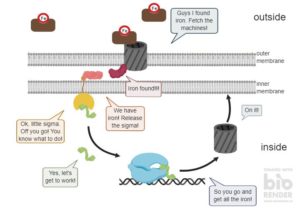
Bacteria sense iron in the environment via proteins that are transporters and receptors in one. The transporter imports iron, while the receptor tells the bacterium that iron is present on the outside. This activates a whole circuit so that the bacterium produces more transporters to capture as much iron as possible.